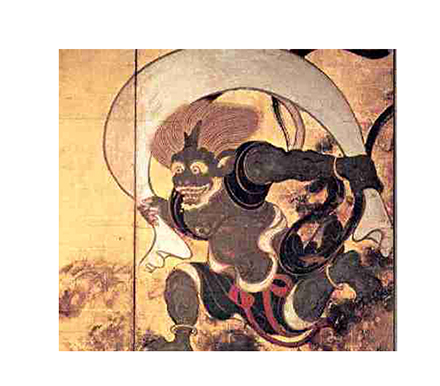
Major Deities of Japan
Many divinities native to Japanese beliefs and religious traditions are from the Shinto religion, while some are from Buddhism or Taoism. These deities are integrated into Japanese mythology and folklore. Japanese deities are an important aspect in the culture and history of Japan and its people.
Here are just a few of the major deities in Japanese mythology:
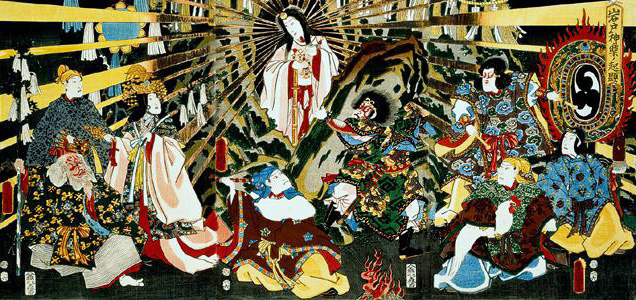
Depiction of Amaterasu emerging from a cave.
Amaterasu-ōmikami 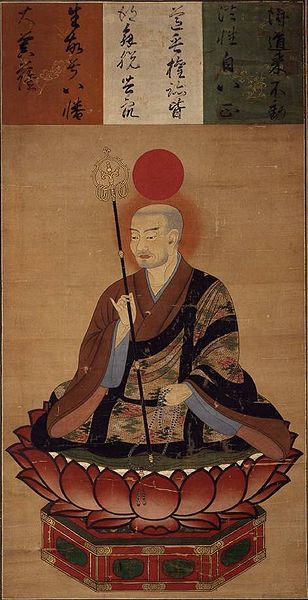 – the goddess of the sun, she is believed to be the ancestress of the Imperial Household of Japan. Her name means “Great Goddess” or “Great Spirit Who Shines in the Heavens.” Her story can be traced all the way to the oldest known records of Japan’s history, in the Kojiki (680 AD) and the Nihon Shoki (720 AD). According to legend, Amaterasu birthed descendants to whom she bequeathed some of her magical items. Among those were Ninigi, who received the sacred mirror; Yata-no- Kagami, the jewel; and Kusanagi-noTsurugi, the sword of Susanoo. All three sacred items collectively became the Imperial Regalia of Japan.
– the goddess of the sun, she is believed to be the ancestress of the Imperial Household of Japan. Her name means “Great Goddess” or “Great Spirit Who Shines in the Heavens.” Her story can be traced all the way to the oldest known records of Japan’s history, in the Kojiki (680 AD) and the Nihon Shoki (720 AD). According to legend, Amaterasu birthed descendants to whom she bequeathed some of her magical items. Among those were Ninigi, who received the sacred mirror; Yata-no- Kagami, the jewel; and Kusanagi-noTsurugi, the sword of Susanoo. All three sacred items collectively became the Imperial Regalia of Japan.
Hachiman – the god of war and the divine protector of Japan and its people. He was originally an agricultural deity but later became the guardian of the Minamoto clan. Most samurai worshipped him and he is considered the tutelary god of warriors. His name means the “God of Eight Banners,” referring to the eight heavenly banners that signaled the birth of the divine Emperor Ōjin. His symbolic animal and messenger is the dove.
A scroll depicting kami Hachiman dressed as a Buddhist monk.
Fūjin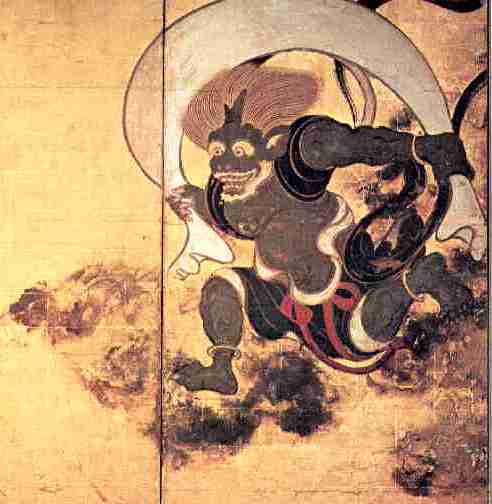 – the god of wind and one of the oldest Shinto gods. He is portrayed as a brown skinned wizard-like demon wearing a leopard skin. He also carries a large bag of wind on his shoulders. The Kojiki (“An Account of Ancient Matters”) is the oldest extant chronicle in Japan describing that Fūjin was born of Izanami-no-Mikoto, the goddess of both creation and death.
– the god of wind and one of the oldest Shinto gods. He is portrayed as a brown skinned wizard-like demon wearing a leopard skin. He also carries a large bag of wind on his shoulders. The Kojiki (“An Account of Ancient Matters”) is the oldest extant chronicle in Japan describing that Fūjin was born of Izanami-no-Mikoto, the goddess of both creation and death.
Depiction of Fūjin.
Ame-no-Uzume-no-mikoto 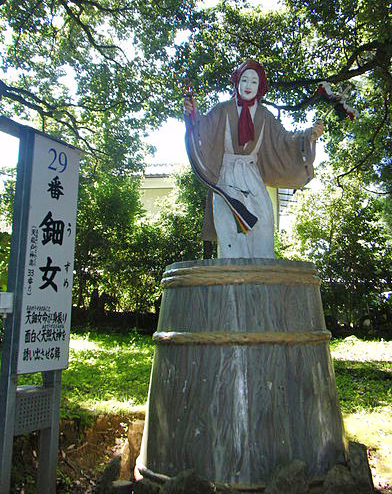 – the goddess of dawn, mirth, and revelry. She is the wife of the god Sarutahiko Ōkami. Uzume is popular for “the tale of the missing sun deity” in which she was able to draw out Amaterasu from hiding and restore light on earth. Ame-no-Uzume-no-mikoto is also known as “The Great Persuader” and The Heavenly Alarming Female.”
– the goddess of dawn, mirth, and revelry. She is the wife of the god Sarutahiko Ōkami. Uzume is popular for “the tale of the missing sun deity” in which she was able to draw out Amaterasu from hiding and restore light on earth. Ame-no-Uzume-no-mikoto is also known as “The Great Persuader” and The Heavenly Alarming Female.”
Sculpture of Uzume.
